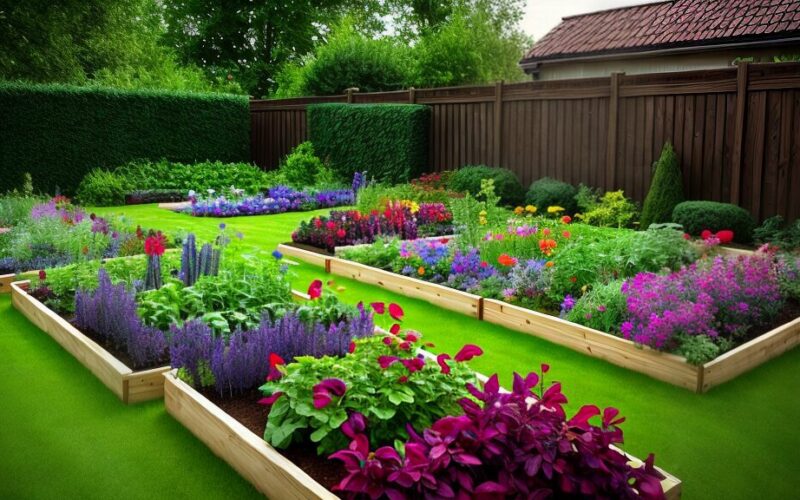Welcome to our guide on selecting the right size for your raised beds. One of the most important decisions you will make when planning your garden is determining the size of your raised beds. Getting this right can help ensure healthy plant growth and make gardening a more manageable and enjoyable experience.
Whether you’re a seasoned gardener or just starting, read on to discover expert tips on finding the ideal dimensions that suit your specific space and needs.
Key Takeaways:
- Choosing the right size for your raised beds is crucial for a successful garden
- Factors to consider when determining size include available space, plant types, and accessibility
- Optimal dimensions can vary for different types of plants and spaces, so it’s important to tailor your raised bed dimensions to your specific needs
Factors to Consider When Determining Size for Raised Beds
When determining the size of your raised beds, there are several factors you should consider to ensure optimal plant growth. By taking into account the following considerations, you can make informed decisions about the dimensions of your raised beds.
Available space in your garden
The amount of available space in your garden is a crucial factor to consider when deciding on the size of your raised beds. If you have a small garden, you may want to opt for smaller raised beds to maximize your planting capacity. On the other hand, larger gardens may allow for bigger raised beds, providing more room for plant growth and increased yield.
Types of plants you want to grow
Different plants have different growth habits and require varying amounts of space. Consider the mature size of the plants you want to grow and plan accordingly. For example, plants with spreading growth habits may require wider beds, while plants with upright stems may need deeper beds to accommodate their root systems.
Accessibility
Accessibility is an important factor when choosing the dimensions of your raised beds. If you have mobility issues, consider building raised beds that are wide enough to allow for wheelchair access. Additionally, if you plan to tend to your garden standing up, consider the width of the bed and choose a size that is comfortable to reach across.
Other considerations
Other considerations that may influence the size of your raised beds include the amount of sunlight your garden receives, the slope of the terrain, and any existing structures or obstacles in the garden. Take these factors into account to ensure that your raised beds are placed in the optimal location and provide the best growing conditions for your plants.
By considering these factors, you can determine the ideal dimensions for your raised beds, providing ample space for your plants to thrive and ensuring a bountiful harvest.
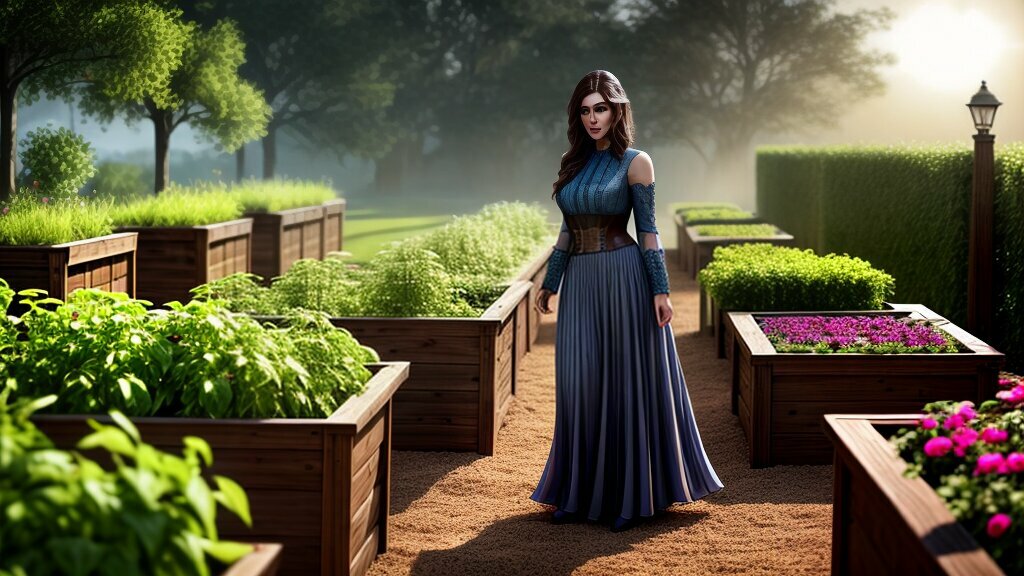
Ideal Size for Raised Beds for Different Types of Plants
When choosing the ideal size for your raised beds, it’s essential to consider the types of plants you want to grow. Different plants have varying space requirements, and choosing the right dimensions will ensure they have enough room to thrive. Here’s a guide to help you determine the best size for your raised beds based on the types of plants you plan to cultivate:
| Plants | Ideal Raised Bed Size |
|---|---|
| Vegetables | 4 feet wide x 8-12 feet long x 12 inches deep |
| Herbs | 2-4 feet wide x 4-6 feet long x 8-12 inches deep |
| Flowers | 1-3 feet wide x 4-8 feet long x 8-12 inches deep |
| Fruits | 4-6 feet wide x 8-12 feet long x 18-24 inches deep |
Keep in mind that these are general guidelines, and you may need to adjust the size of your raised beds based on the specific varieties of plants you’re cultivating. Some plants, such as tomatoes or corn, may require more space than others. Additionally, if you plan to grow a mix of different plants in the same bed, make sure to choose dimensions that allow for adequate spacing and companion planting.
By selecting the right size for your raised beds based on the types of plants you plan to grow, you’ll set your garden up for success. Your plants will have plenty of space to grow and thrive, ensuring a bountiful harvest.
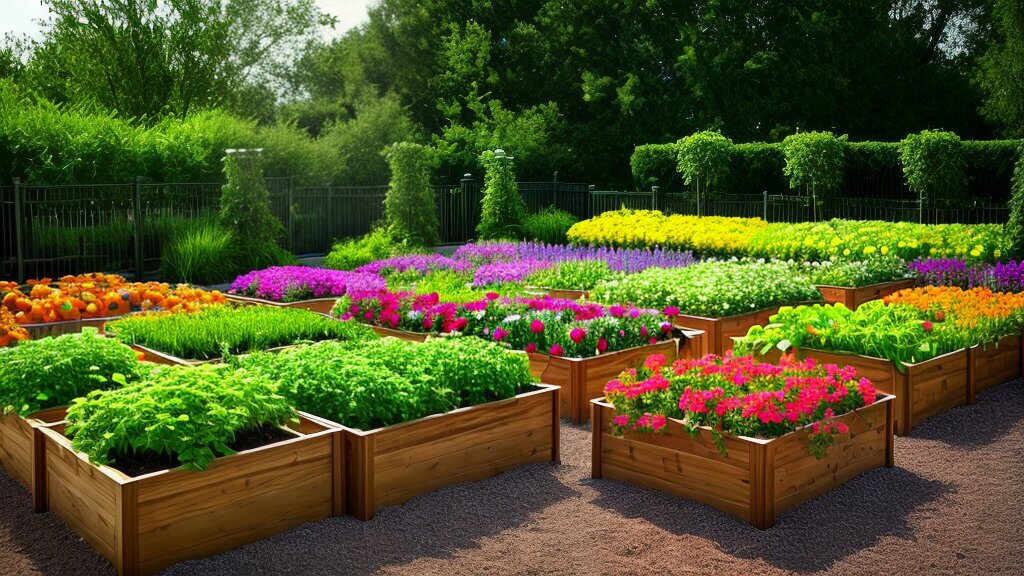
Tailoring Raised Bed Dimensions to Your Space
When it comes to choosing the right size for your raised beds, it’s important to consider the available space in your garden. Don’t let a small area discourage you from growing your own fresh produce! With a little creativity, you can maximize your yield in even the tiniest urban garden.
For small gardens, it’s best to choose a size that fits comfortably in the available space. A smaller raised bed can be more manageable and easier to access. Keep in mind that smaller beds may require more attention to watering and soil management, as they dry out more quickly than larger beds.
If you have a larger space to work with, you can consider creating longer or wider raised beds. This can be beneficial for plants that require more space to spread out, such as sprawling tomato plants.
Another option for larger spaces is to create multiple raised beds, which can be arranged strategically in different areas of your garden. This allows you to grow a wider variety of plants while still maintaining an organized and manageable space.
No matter the size of your garden, a key consideration for raised bed dimensions is accessibility. Make sure your beds are not too wide or too long to easily reach the center from both sides. It’s also a good idea to create paths between your raised beds to allow for easy maneuvering and harvesting.
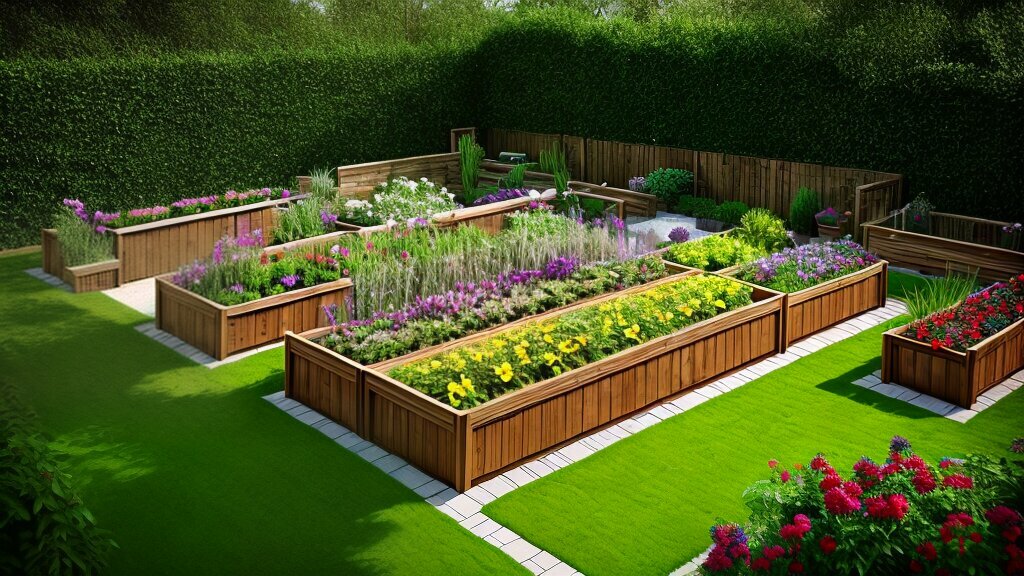
By tailoring the dimensions of your raised beds to your specific garden space, you can ensure that you’re making the most of your available area while still providing your plants with optimal growing conditions.
Building and Designing Raised Beds for Optimal Size
When it comes to building and designing raised beds, size is a crucial factor to consider. The dimensions of your raised beds will determine how much soil you need, how much water your plants will require, and how many plants you can accommodate in your garden space. To ensure optimal growing conditions, here are some practical tips to keep in mind:
Depth
The depth of your raised beds will depend on the types of plants you want to grow. For most vegetables and herbs, a depth of 6-12 inches is sufficient. However, deeper beds of 18-24 inches may be necessary for root vegetables like carrots or potatoes. Keep in mind that deeper beds will require more soil and may be more challenging to water and maintain.
Width and Length
When it comes to the width and length of your raised beds, accessibility is key. You should be able to reach the center of your bed easily from all sides. A width of 3-4 feet is ideal, and length can vary based on the available space in your garden. Keep in mind that longer beds may require additional supports to prevent bowing or warping over time.
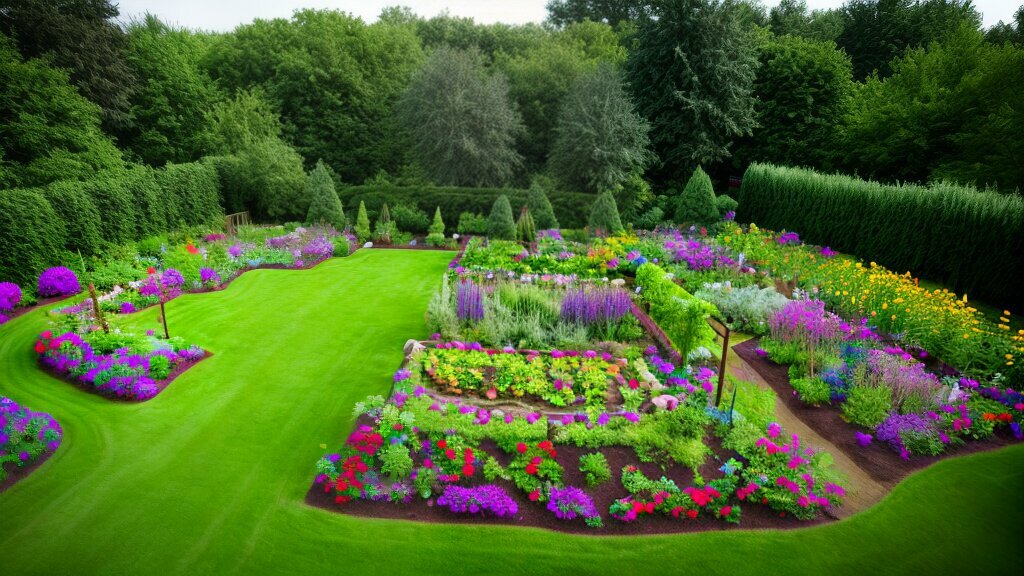
Materials and Construction
The materials you choose for your raised beds can impact the size and design. While wood is a classic choice, it can be prone to rotting and may require frequent replacement. Other materials like cinder blocks or galvanized steel are more durable but may have limitations on size and shape. When constructing your raised beds, ensure that they are level and well-supported to prevent shifting or buckling.
By keeping these tips in mind, you can design and build raised beds that provide optimal growing conditions for your plants. The right size and dimensions can make all the difference in the success of your garden.
Popular Raised Bed Sizes and Dimensions to Consider
When it comes to selecting the perfect size for your raised beds, it can be helpful to explore popular dimensions that many gardeners swear by. Here are some tried and tested sizes for your consideration:
| Raised Bed Size | Ideal for | Advantages | Disadvantages |
|---|---|---|---|
| 4 feet x 4 feet | Vegetables, herbs, flowers | Easy to manage, suitable for small gardens | May not accommodate larger plants or root systems |
| 4 feet x 8 feet | Vegetables, herbs, flowers, smaller fruit trees or bushes | Provides more space, allows for crop rotation | May be heavy and cumbersome to move or maintain |
| 3 feet x 6 feet | Smaller vegetable or herb gardens | Good for narrow spaces or paths, easy to reach across the bed | May not be suitable for larger plants or root systems |
It’s important to note that these sizes are not one-size-fits-all solutions, but rather suggestions that can be tailored to your specific gardening needs. Consider the factors discussed in previous sections, such as available space, plant types, and your own physical capabilities, when choosing the dimensions for your raised beds.
Remember to prioritize functionality and accessibility when determining the size of your raised beds. A well-designed garden with properly sized raised beds will not only be aesthetically pleasing but will also provide a bountiful harvest for years to come.
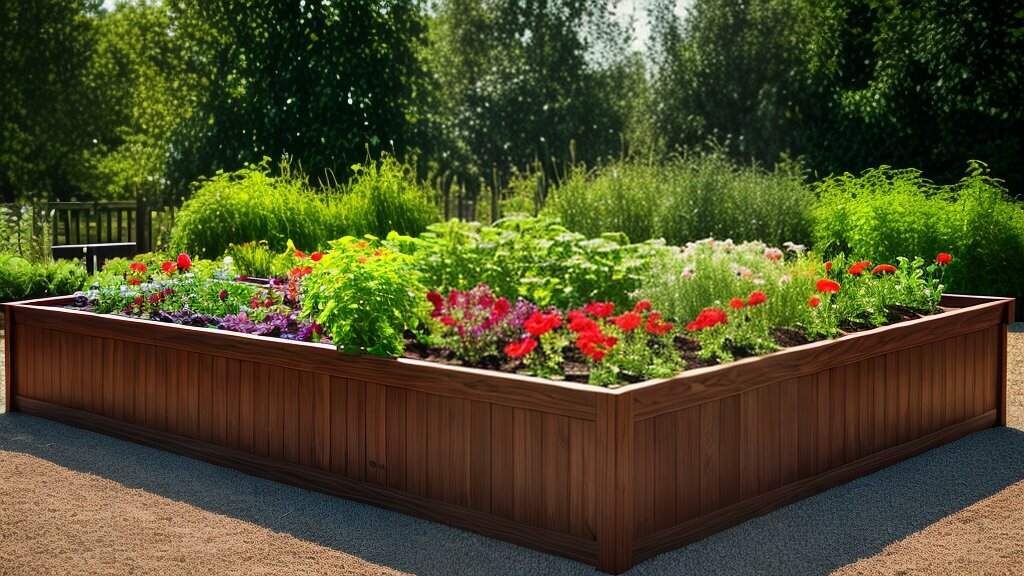
Expert Tips and Tricks for Choosing the Right Size
Choosing the right size for your raised beds can seem overwhelming, but with some expert tips and tricks, you can make an informed decision that suits your needs and yields the best results.
Consider the Growth Habits of Your Plants
Before selecting the size of your raised beds, consider the growth habits of your plants. Some vegetables, such as tomatoes and peppers, require more space to spread out, while others, like lettuce and herbs, can be grown closer together. Keep this in mind when determining the width and length of your raised beds.
Maximize Space with Vertical Gardening
If you have limited space, vertical gardening is an excellent way to maximize your yield while still keeping the size of your raised beds manageable. Consider using trellises or stakes for vining plants like cucumbers and beans, or hanging baskets for strawberries or herbs.
Accessibility Matters
When deciding on the size of your raised beds, make sure to consider accessibility. Keep the width of your beds between 2-4 feet, so you can easily reach the middle without stepping into the garden. If you plan to use a wheelchair, make sure your raised beds are no higher than 30 inches and have a ledge for easy access.
Use Companion Planting
Companion planting involves growing different plants together that benefit each other, such as planting herbs near vegetables to repel pests. Consider using companion planting to maximize your yield while still maintaining a small raised bed size.
Take Advantage of Microclimates
Microclimates are small, unique areas within your garden that have different growing conditions than the surrounding area. Consider the dimensions of your raised beds to take advantage of the microclimates in your garden. For example, if you have a sunny spot that heats up quickly, choose a smaller raised bed to take advantage of the warmth and increase your yield.
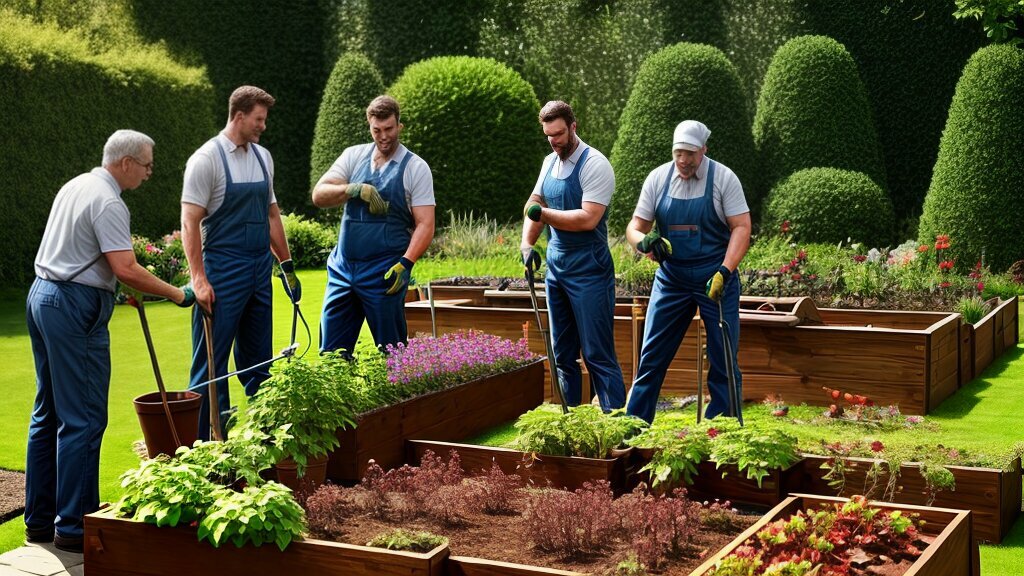
Factor in Your Budget
Before building your raised beds, factor in your budget. Larger raised beds require more materials, which can quickly add up in cost. If you want to start with a smaller garden, consider building one or two raised beds and expanding over time to save on costs.
Get Creative with Shape
Who says raised beds need to be rectangular? Get creative with the shape of your garden to maximize space and suit your style. Circular raised beds, for example, can help you fit more plants into a small space while adding a unique visual element to your garden.
Conclusion
Congratulations, you are now equipped with the knowledge and expertise to choose the perfect size for your raised beds! Remember to consider important factors such as available space, plant types, and your specific needs when determining the dimensions of your raised beds.
By using our expert tips and recommendations, you can create raised beds that will support healthy plant growth and provide you with a bountiful harvest. Whether you have a small urban garden or a large space, our advice will help you tailor the dimensions of your raised beds to your specific gardening needs.
So, go ahead and start building and designing your ideal raised beds for optimal plant growth and garden enjoyment!

